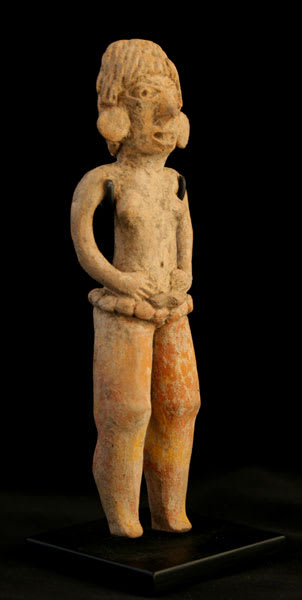Xochipala Terracotta Sculpture of a Woman, 1050 BCE - 500 BCE
1.625 x 5
CK.0083
Further images
The name Xochipala has been attached to an early style of figurines and pottery unearthed in the modern Mexican state of Guerrero. Xochipala figures are noteworthy not only for naturalism,...
The name Xochipala has been attached to an early style of figurines and pottery unearthed in the modern Mexican state of Guerrero. Xochipala figures are noteworthy not only for naturalism, but also for their age. The Xochipala style dates to the Early Formative period of Pre-Columbian Mesoamerican history (around 1800-200 B.C.), making them among the earliest works of figurative art in the region, contemporaneous with the more celebrated Olmec culture of the Gulf Coast. While certain scholars have tried to trace links between the Olmec and Xochipala styles, other scholars have ardently disagreed, making it possible that any artistic similarities may have derived from cross-cultural influences and not direct relations. While the Olmecs may have overshadowed the Xochipala culture in our contemporary popular knowledge of Mesoamerican history, Xochipala figures are almost universally praised by scholars and connoisseurs for their striking naturalistic modeling and sensitive depictions.
This woman stand with her hands held at her hips, just above the beaded belt that encircles her waist. Her mop-like hair covers her forehead. Incised lines imitate the texture of individual strands of hair. Her eyes are open and alert and her mouth is slightly ajar as if about to speak. Large circular earrings complete her adornment. Despite being thousands of years old, this sculpture still bears some remnants of the original orange and yellow polychrome, most noticeably on the legs.
This woman stand with her hands held at her hips, just above the beaded belt that encircles her waist. Her mop-like hair covers her forehead. Incised lines imitate the texture of individual strands of hair. Her eyes are open and alert and her mouth is slightly ajar as if about to speak. Large circular earrings complete her adornment. Despite being thousands of years old, this sculpture still bears some remnants of the original orange and yellow polychrome, most noticeably on the legs.





